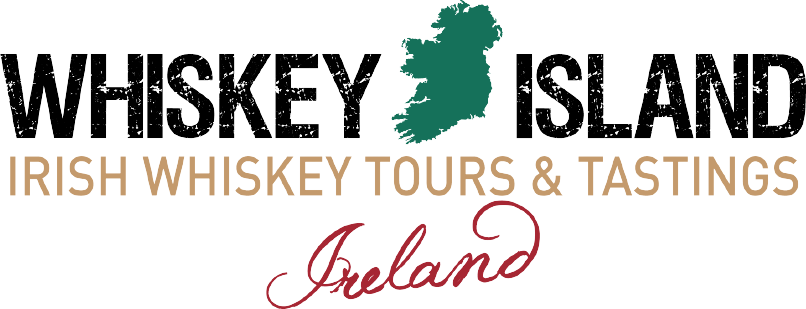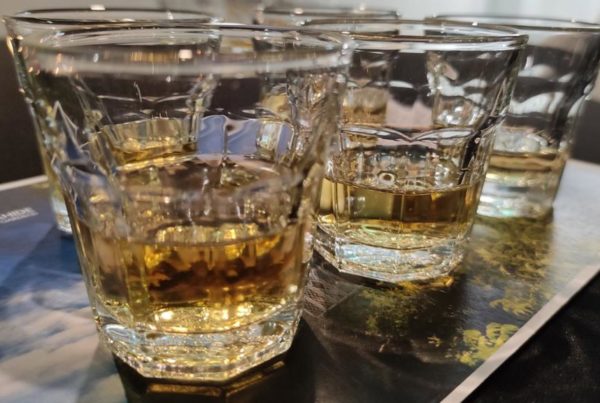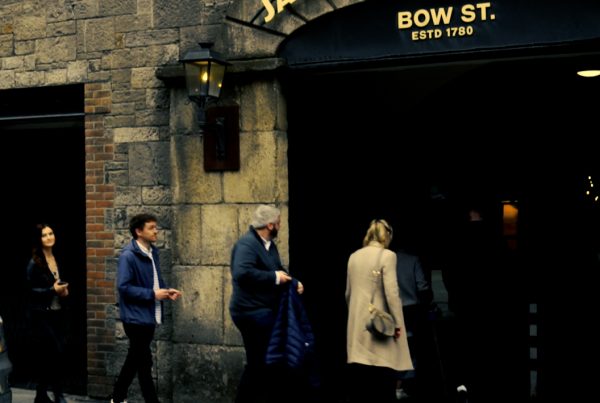Whiskey Island was recently asked to contribute to an article by Porch. Porch is a home services platform and connects homeowners with quality home improvement, repair and maintenance professionals. Check out www.porch.com
The article can be read on Porch.com at : https://porch.com/advice/whisky-tips
How to Store, Taste, Preserve and Mix Whisky: Tips from the Experts
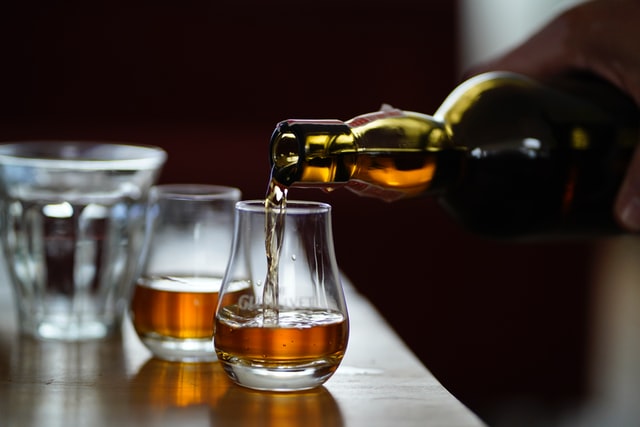
Whisky is a drink unlike any other. There are many classifications, types, and roots in the world of whiskey, and these labels can be confusing, particularly for those who are just getting started. It is consumed in large volumes across the globe and is associated with numerous occasions. It is truly an elixir and consumed for various reasons; some people or connoisseurs drink it for more than just its effect. Other whiskey properties such as its taste, aroma, and color play a significant role in its consumption. We have reached out to whiskey fans and lovers to help you better understand and get to know a little bit more about the world of whiskey.
What makes Irish whiskey unique?
In this wonderful world of whiskey we live in; there’s Scotch, Bourbon, Canadian, Japanese, Indian, Welsh… the list goes on. I very proudly work in Irish whiskey, specifically in whiskey tourism; I take whiskey fans on escorted whiskey trails all over Ireland. In this article, I answer the question of what makes Irish whiskey unique? For me, it’s all rooted in the fact that Ireland is the home of whiskey.
Did you know the Irish invented whiskey? (sorry, Scotland 😊). We have a book in Ireland dating back to the 14th century, and in it, there appears to be the first-ever written account of whiskey distillation. Irish whiskey dominated the world whiskey scene for a long time. Throughout the 16th – 19th centuries, it was the most popular whiskey in the world. But due to a series of crippling national and international events early in the 20th century, Irish whiskey had a dramatic fall from grace. The 1960s nearly wiped it out, but fortunately, the handful of distilleries left (including Jameson) joined forces – a move that saved the category. The renaissance of Irish whiskey can be traced back to this point, and it is still very much ongoing!
The word WHISKEY has its origins in Ireland. ‘Whiskey’ is the Anglicised version of the Gaelic term uisce breatha, meaning ‘water of life.’ Once upon a time, we all spelled it WHISKY. The Irish added the E, and nowadays, the spelling varies depending on where you are… Irish and American producers prefer ‘ey’, whereas Scottish and Canadian producers opt for the ‘y’ ending.
What makes Irish whiskey unique? It must be produced and reach maturity in a distillery located on the island of Ireland, consisting of both Republic of Ireland and Northern Ireland. It must have been barrel-aged in wooden casks for a minimum of three years, and it can either be double or triple distilled. Irish whiskey has a ‘depth and diversity’ unrivaled among other whiskeys, thanks to the craftsmanship of our distillers and blenders. And we’re just getting warmed up!
– John Callely JR from Whiskey Island
What is the difference between single malt and single grain whisky?
Single malts tend to dominate the whisky world, with the oft-forgotten Single grain whisky often taking a bit of a backseat. But all is not what it seems – and this is also a question of two-halves really! Firstly, the term ‘Single’ can initially be confusing but simply means that the whiskey is a single distillery product. It can contain whiskey from many different casks within that distillery, but they all have to be produced by it. Now to the second half: Malt or Grain.’Malt’ refers to the use of barley grain in the production of whisky. Water is added to the barley at room temperature, and the grain starts to germinate. The aim of this is to convert the starch in the barley into sugars.
The grain is then ‘malted’ either by the traditional floor malting method (where the grain is spread across a malting floor and periodically turned by hand) or by using large drums to turn the barley. After a set number of days of germination, it is used in whisky production, being distilled using traditional copper pot stills (which look great in Distillery pictures!)
Malt whiskies have a very large range of flavors, and the malted barley is often dried over peat to produce smokey palates.
Popular brands are:
Ardbeg
Bunnahabhain
Highland Park
Kilchoman
Grain whiskies do not have to be produced from barley. The spirit may well be produced using wheat, corn, or rye, as in Bourbon and American Whiskeys. Single grains are also distilled in a different kind of stil called a column or Coffey still. They can produce a whisky of a high ABV and are generally used to give body to blends.
However, they can be just as complex and enjoyable on their own as Single Malts are and have a very loyal legion of fans! They are often sweeter in palate and lighter-bodied.
Popular brands are:
Girvan Patent Still
Loch Lomond Single Grain
North British
– Gary Wilson from Malthound
Tips to start your whisky collection. Why join a whisky club?
Beginning a journey into anything is daunting at the first step – why should whisky be any different? The number of brands, regions, styles, and classifications can make for a harrowing decision by the new-drammer. And the price of whiskies nowadays makes ‘blind experimentation’ an expensive exercise. Joining a curated whisky club is a great way to ‘get your head around’ whiskey by utilizing the knowledge, expertise, and experience of the club’s [hopefully expert] buyer to guide and curate your whiskey collection.
Joining a curated whisky club will [should] give you access to not only accurate and in-depth tasting notes for each whisky, but an explanation as to how it was made, what it was aged in and for how long, and any other special or interesting features of the whisky. Reading these notes while tasting each dram is going to help increase your ‘whisky knowledge’ quickly. You’ll soon learn things you like, things you definitely don’t like, and all manner of nuances in between – allowing you to confidently ‘step out’ on your own to choose from racks in a store.
A good whisky club will also have access to whiskies you wouldn’t usually be able to find on your own. Limited releases, single cask expressions, exclusive bottlings, plus whiskies from smaller distilleries that you might not ever see in a bottle shop. Finding a ‘new favorite,’ you may never have heard of, from a country you may have never considered is a nice side benefit!
How to decide on a whisky club? The best way is to have a look at their past whiskies and notes for their offerings. You should see a wide range of styles, countries, and brands represented in their past offerings.
– Brad Wright from The Single Malt Whisky Club
What does ‘peaty’ mean when describing whisky?
You may have heard of peat or peaty whisky, but do you know what peat is? Peat looks like soil, but it’s really partially decomposed vegetable matter such as moss and tree roots and develops in wet, acidic conditions such as bogs. It was traditionally used as fuel in Scotland. Because it is so slow to develop, it is classified as a fossil fuel. When peat is dried in a kiln used to malt barley for whisky, it produces a peaty aroma thanks to the organic compounds known as phenols, a type of carbolic acid found in smoke tar. But this isn’t the aroma of burnt wood or ash but smoky just the same. The scent of peat can also be described as seaweed, briny, fish oil, iodine, rubber tire, soapy, sulfuric, medicinal, rich, fruity, spicy, grassy, herbal, nutty, citrusy, creamy, or even salty. Since 90% of what we taste is based on aroma, we associate the flavors with peat.
Now that peat is not the main fuel of Scotland, not every whisky from Scotland is “peated.” Some whiskies produced in India, Ireland, Japan, and New Zealand also use peat. There is lightly peated whisky and whisky that is heavily peated. The peat can be measured in phenol parts per million. So a light whisky might have 20 ppm while a heavily peated whisky might have 10 times as much or 200 ppm. Typically you will find whisky with 35-50 phenol ppm. Examples of peated whisky come from some of the most famous and well-known distilleries from the isle of Islay, such as Ardbeg, Bowmore, Laphroaig, and Caol Ila, which are all heavily peated. Another peaty whisky to try includes Highland Park and Lagavulin.
– Adam Levy from The Alcohol Professor
How do whisky clubs work, and what are the benefits of joining?
Whisky Clubs help you on your journey through the wonderful world of whisky and whiskey. You will meet new friends that share your love of whisky, as well as a support network that will share their knowledge when required.
With so many bottles available and seemingly more launching every week, the support of a whisky community can be invaluable, giving you opportunities to experience and learn, helping you hone in on what you like and don’t like, and hopefully saving you lots of wasted investment in whisky you just don’t like.
While there are many forms of whisky club, they all revolve around a whisky community sharing their love for whisky and knowledge. Some will be local, bringing members together to meet regularly to taste bottles at a local venue. In contrast, others are national, delivering whisky to people’s homes and offering a virtual experience.
We, for example, share full bottles with members every second month and host our community on both Discord and a private Facebook group, where members can chat about anything whisky (and often much more) in a safe environment; there is never a wrong question. Everyone is always there to help others as they have been as well. We like to go further with our Virtual Whisky Festival, Virtual Distillery Tours, and Virtual Pub nights, and once the world allows, we will be holding physical get-togethers for members as well.
If you like whisky and want to get more involved, a whisky club is definitely the way to go.
– Daniel Humphrey from Summerton Whisky Club
Apple cider Whiskey cocktail recipe
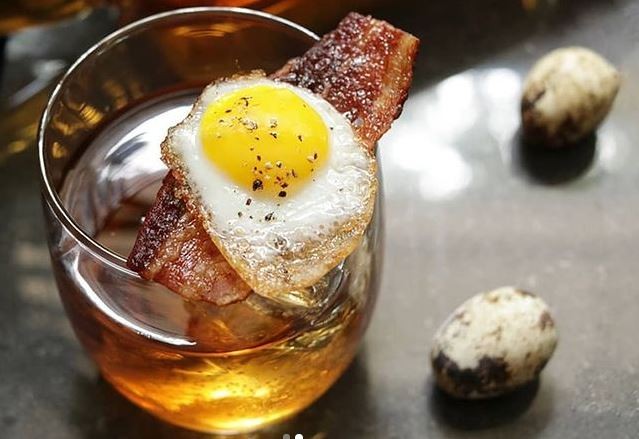
- 4 oz Callalisa Whiskey
- 4 ml Pure cane maple syrup
- 2 oz Apple cider
- 1 oz Ginger beer (Serves 2)
How To Garnish: Caramelized bacon with a fried quail egg on top!
– Josh Miller from Moonshine Recipe
What’s the difference between bourbon and rye whiskey?
The difference between bourbon and rye whiskey can be very basic or quite complicated based on the plethora of ‘types’ of whiskey the United States Alcohol and Tobacco Tax and Trade Bureau have definitions for. At the absolute basic level for whiskey made in the United States, it is as follows:
The grain used to distill bourbon whiskey must be at least 51% corn. The grain used to distill rye whiskey must be at least 51% rye.
However, as with many things in life, there is a nuance to labeling and nomenclature that muddy the waters a bit. If there wasn’t, why would this be a common question? So let’s go over a few things that could be at play when discussing the similarities and differences.
To keep things simple, we will only be discussing bourbon and rye without the word “blend” or “blended” in the type designation.
Similarities
All bourbon and rye whiskey produced in the US of A will be derived from only grain, distilled to no more than 80% alcohol by volume, stored in charred new oak containers at no more than 62.5% alcohol by volume, and bottled at no less than 40% alcohol by volume. Both bourbon and rye can be designated as “straight” to indicate they have been stored for a minimum of two years and have not had any coloring, flavoring, or other blending materials added.
Differences
As mentioned above, bourbon must be distilled from a minimum of 51% corn; rye must be derived from a minimum of 51% rye. Bourbon can only be made in the United States (as protected by many trade agreements), rye whiskey can be produced in other countries (notably Canada) and could be subject to that nation’s laws. To add to the confusion, “rye” is sometimes used by Canadians as a generic word for any whiskey, regardless of how it is made or what it is made from. Bourbon that is not designated “straight” cannot have any coloring, flavoring, or blending materials added, whereas rye whiskey without the “straight” designation can contain up to 2.5% of said materials.
-Ross Salchow from Great Lakes Distillery
How to store your whisky
If you are looking to collect whisky or have a collection already, it is important to know how to store it correctly to ensure a long lifespan for your bottles. Whisky can be subject to evaporation, loss of flavour, and aesthetic damage if kept in the wrong conditions. Storing your whisky correctly ensures that it can be drunk or sold many years into the future.
There are four main conditions for storing whisky for long-term purposes.
Storing upright: Due to the higher concentration of whisky compared to other alcohols, a minimum of 40%, it can quickly degrade the cork if in contact with it. Therefore, in direct contrast to wine, whisky cannot be stored laying down as the alcohol would quickly destroy the cork.
A tight seal: As cheap corks dry out over time, a gap can appear between the cork and the bottle’s neck. When combined with cork’s slight permeability to gases, this can result in exacerbated evaporation of your whisky. Not only will evaporation result in a poor spirit level, but it will also remove the most volatile aromas and flavours of the whisky. This can make it dull and less exciting to drink. Sealing bottles with films such as parafilm can prevent this as they are more impermeable to gas.
Out of sunlight: Direct sunlight can bleach the colour of both the whisky and the label. The colour can never be restored and will dramatically reduce the value of your bottle. Sunlight can also degrade the compounds of whisky and make it taste rancid. Keeping whisky out of direct sunlight also prevents fluctuations in temperature, which can cause the whisky to expand and the bottle from popping if there isn’t enough headspace.
Humidity: If there is too much moisture in the air, labels can degrade, and bacteria is encouraged, resulting in mold on the bottle. Conversely, if all the moisture is stripped out of the air with an air conditioning unit, higher evaporation levels will occur. An optimal balance must be found, usually at approximately 45%.
Once these conditions have been implemented, your whisky should be protected and maintained for many years.
Check out this video for more tips.
-Matt Littler from Mark Littler
How important is the cask (type/size) in whisky aging?
Whisky, like most liquors, starts its life as a combination of grains and water that are heated and then distilled into alcohol. While some flavor can be derived just from the sugars of these grains, much of the characteristic taste of bourbon, scotch, and other whiskies come from the cask or barrel that it is aged in. The use of wooden casks for aging and finishing is an essential part of the whisky-making process.
Although one can argue there are countless variables that go into producing a good batch of whisky, there are three main factors related to the cask to consider: type of wood, previous use of the barrel, and size.
If you are going to build a cask to hold whisky, you need to start with the wood. Traditionally, Oak is the preferred wood for whisky cask making, partly because of its plentiful nature and its structural properties. Oak is hard and durable and flexible enough to be shaped and porous sufficient to allow the whisky to absorb into the wood and take on its flavor. For a whisky to legally be considered American bourbon, charred virgin (not previously used) American Oak barrels are required.
While bourbon requires new barrels for aging, many other whiskies are aged in previously used casks. Many scotch distillers prefer to use old bourbon casks to age their whiskies because why waste? Additionally, many distillers finish their whisky (an additional, shorter aging process) in barrels previously used to store wines or age other liquors to add extra, unique flavors.
Lastly, the size of the cask does matter. A typical bourbon barrel is 53 gallons or 200 liters. Because of math, smaller casks create more surface area per volume, speeding up the aging process. Larger casks have the opposite effect, which may be desirable when finishing in an intensely flavored wine cask.
While many other things not mentioned impact the final flavor of the whisky (quality of water, time aged, climate, etc.), the type and size of the cask used are both incredibly important.
-Sean Sirianni from WhiskySuggest
Tips to become a better whisky shopper? How to choose the best one for you?
It’s not always easy to find a whisky that fits your personal taste, especially if you’re still at the start of your whisky journey and have yet to figure out your preferences. It’ll become easier along the way, but how are you supposed to know the difference between Glenfarclas or Glenfiddich? At a certain point, you’ll find those can’t miss distilleries that produce whisky perfectly suited to your palate. Until then, there’s really only one way to shop, which is to try before you buy.
Obviously, this isn’t always possible, especially when shopping online. But there are many specialized retailers with an impressive collection of open bottles. They’ll not only be able to offer you a taste of the nectar before shelling out the big bucks, but its employees will often give helpful advice, skilfully steering you towards your next purchase. Indeed, it’s important to shop locally, also when buying whisky.
If there’s no great whisky shop near where you live, you might be able to visit a bar and taste a few drams of whiskies you’re contemplating to snap up. There are even online retailers selling small sample bottles of whisky. They’re a great way to taste test and experience many different whiskies without immediately having to pay for an entire bottle. After all, whisky is a luxury good and most of them don’t come cheap. So, in summary, it is important to do some liquid research first and buy second.
-Thijs Klaverstijn from Words of Whisky
Neat? On the rocks? In a cocktail?
If you speak to your average whisky representative, they will tell you that there is no correct way to drink whisky. They are, of course, utterly wrong. There is absolutely a proper way to drink whisky. It’s just… no one can seem to agree what way that is.
Take Johnnie Walker Red Label, for example, the world’s highest-selling Scottish whisky (or Scotch to its friends). Its flavour profile is designed so that it perfectly accompanies certain miscellaneous cola-flavored beverages. This essentially condemns the poor Red Label to taste akin to furniture polish when drunk neat.
However, on the other hand, take the majestic Lagavulin 16 Year Old. It is a single malt that famously packs a peaty punch: essentially a bonfire in a glass. As soon as you start adding other flavours such as soda water (or vermouth), the drop’s perfect smoky balance is lost.
Travel to America, and you’ll discover the endless flavour possibilities of corn-based whisky, which, to the untrained palate, all taste rather like bourbon. These big caramel and new oak flavours may benefit from the calming effect of an ice cube slowly melting in your glass, smoothing off any rough edges.
Finally, consider some of the drams made in my home state of Tasmania. Here we famously make less whisky than the Scots spill each year, with some batches producing less than 100 bottles! When this stuff is so rare, there’s just not enough of it going around to experiment with. You are expected to savour every mouthful as a mayfly might soak up its precious few rays of sunlight.
So after five paragraphs of aimless ‘whisky waffle’, am I any closer to answering the original question? Perhaps not. I’ll have to take a small sip of my neat Glenfarclas 15 Year Old and ponder the matter further.
-Nick Turner from Whisky Waffle
Whisky remains an ever-popular spirit enjoyed around the world. But choosing a favorite and deciding how best to enjoy it can be difficult because there are so many choices and opinions out there. This guide has been put together to help you enjoy this wonderful beverage even more – whether you’re a seasoned whisky drinker or someone who enjoys the occasional tipple here and there. Of course, our first piece of advice is always to consume alcohol in moderation.
